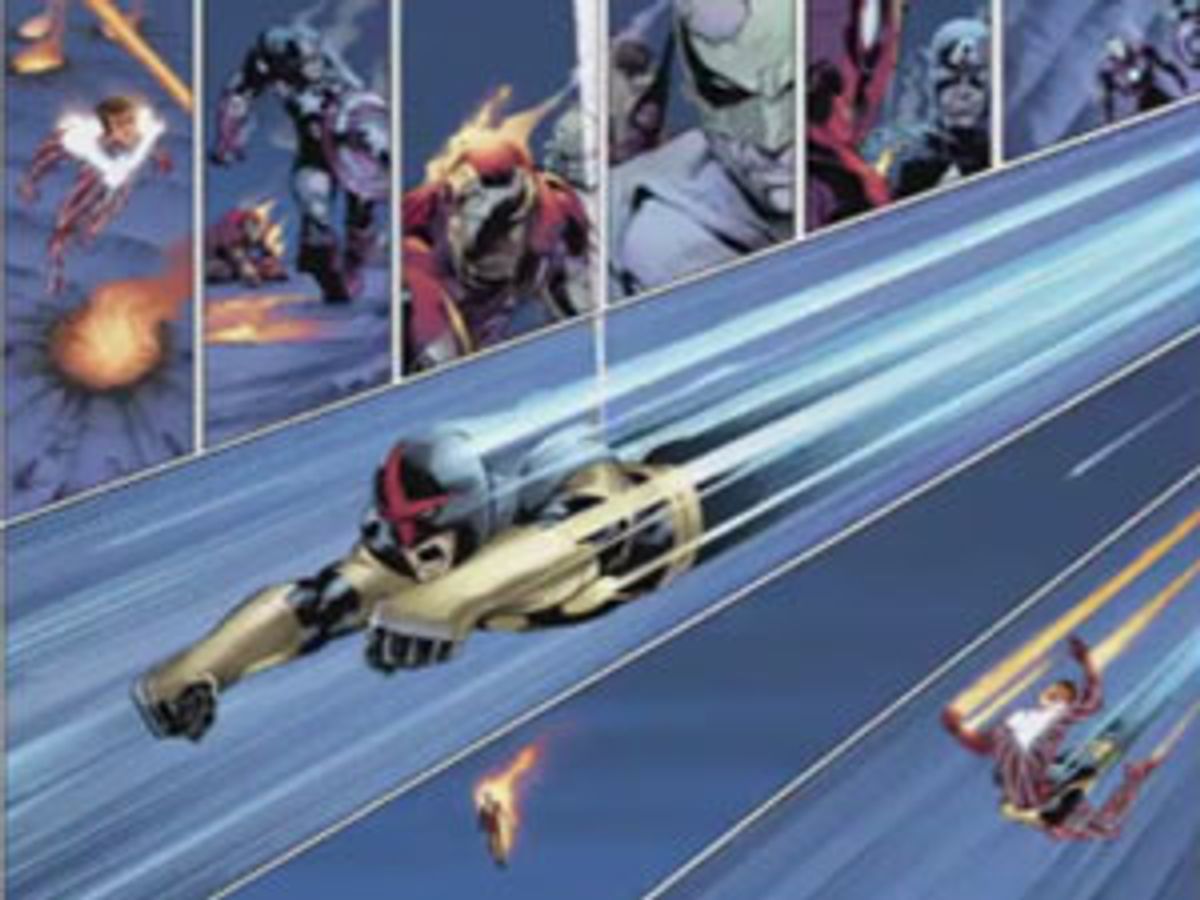For years, fans like myself have been flocking to local comic-book stores every Wednesday to pick up newly arrived issues of The Avengers, Batman, and X-Men. And lately, we’ve had the option to power up our tablets or computers and purchase a digital copy, including back issues of 30 000 older DC, Marvel, and other comics.
While these electronic editions are a boon for readers who can’t get to the store, they’re little more than straightforward replicas of made-for-print content in screen-viewable form, rather than content created with the screen in mind. Mercifully, there are some signs of progress, with smaller publishers leading the way.
There are several reasons why the comic-book industry’s embrace of digital has been considerably slower than a speeding bullet. First and foremost, the industry fears cannibalizing already-low print sales, which would threaten the fragile ecology of the several thousand independent retail comic-book stores through which most of these paper copies are purchased. (The website Comichron estimates that the top 300 comic-book titles collectively sold about 80 million copies in 2012.)
Another speed bump is that the standard page most comic-book writers and artists are accustomed to is 12 inches (diagonally), while most tablet displays are 2 inches or so smaller. Features like ComiXology’s Guided View, originally created for the tiny displays of smartphones, attempt to finesse the size difference with panel-to-panel tap navigation, but not all page layouts are suited to this approach.
However, losing 20 percent of a comic’s page size is a small price to pay for the potential benefits of escaping the shackles of paper. “You can use techniques that can’t be used in print, or at least not replicated easily,” says Mark Waid, longtime author for DC and Marvel comics and publisher of Thrillbent digital comics. “In a digital comic, you can do ‘rack focus’—shifting focus between foreground and background—in the same panel, versus having the reader's eyes move to another panel that shows the altered focus. And you can have dialogue popping up in the same panel.”
Daniel Mikah Govar, cofounder and creator-illustrator at Comic Book Think Tank, agrees. “Developing the comic from the beginning digitally allows panels to be arranged and sized independently of a page format or shape,” he says. “Digital creation will come first for all comics eventually,” he says. “Print is far less forgiving and can offer fewer features, and I see the digital market as a separate market from the print market.”
But is there a point when a digital comic book morphs into something else, such as an animated movie?
“I believe that the reader has to stay in control of the experience, just like with a book or magazine or printed comic,” says Waid. “It needs to be up to you, the reader, to decide at what pace you go through the story. Once the creator starts adding music, voices, animation, or anything that imposes moving time on the experience, your control as a reader over the pacing is taken from you, and it becomes a more passive—and certainly a different—experience.”
Other creators are pushing that boundary. For example, with Madefire’s authoring tools—as well as a reader app for consumers—they can include animation, 360-degree navigation, music, and sound effects.
While smaller publishers have been leading the way, the big players are starting to develop uniquely digital content, too, at least on a limited basis. The owner of my local comic store just introduced me to Marvel’s augmented reality app for iOS and Android. When you point your phone or tablet’s camera at a special “AR” logo in a Marvel comic, creator commentaries, character bios, video recaps, script excerpts, 3-D shorts, and more can pop up on the device’s display.
E-zam! E-pow! E-’nuff said!
About the Author
Daniel P. Dern is an independent technology writer who has been reading and enjoying comic books since the days when they cost only a dime. He can be reached at dern@pair.com. His website is https://www.dern.com, and his technology blog is Trying Technology.
